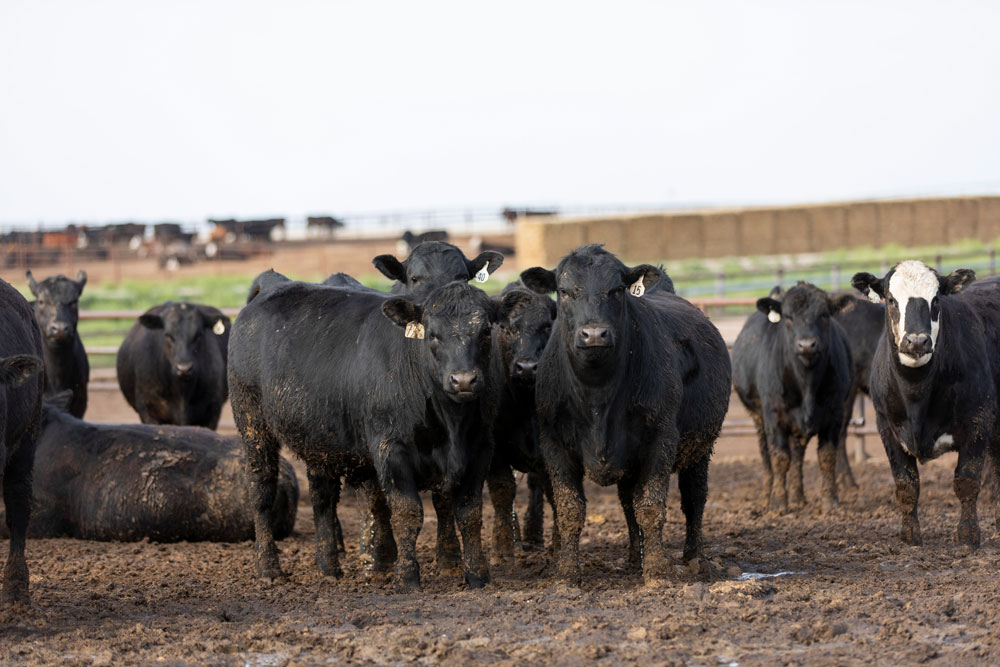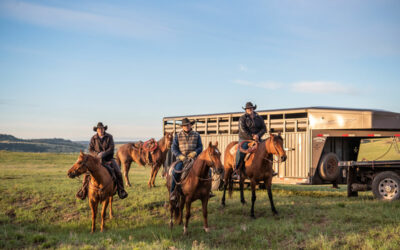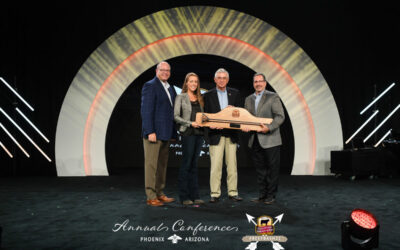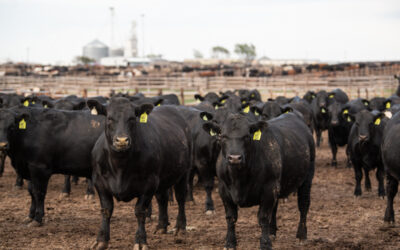
Capturing value for calves
by Morgan Marley
December 5, 2019
The way we market fed cattle has changed. Better formula and grid-based pricing structures channeled greater returns to cattlemen, which led to higher quality in the American cow herd.
It trickles down to the cow-calf producer and how they choose to sell calves. Consumer dollars favor adding value to the end product, and it pays to start down that road while still on the ranch.
That’s the consensus of panelists at the 2019 Range Beef Cow Symposium in Mitchell, Neb. Those included the Certified Angus Beef ® (CAB®) brand’s Paul Dykstra, Nebraska feeder and rancher Gary Darnall and South Dakota Angus cattleman Britton Blair.
“As a cow-calf producer, we have more opportunities to receive value at different segments, or different points in our operation than any other segment in our industry,” Darnall said. “But we really find out when we retain ownership.”
All the panelists echoed that message. So why don’t more producers retain ownership of their calves all the way to the packer?
Risk.
There’s a higher death loss once calves leave your ranch. But Blair said, “that comes back on you” and making sure of your vaccination and management program.
“The longer you own the animal, the longer you’re at the mercy of the market,” Darnall said.
Market swings also bring opportunity to alert watchers who can hedge to lock in a profit.
“But you have to be ready to pull the trigger,” Blair said.
When you get past the risk, advantages await for those who try.


Many cattlemen don’t operate in commercial feeding areas, and it takes effort to contact feedyard managers. But there aren’t a lot of secrets in the cattle business, the panelists said. Just ask the right people the right questions.
“The good part is, the livestock business is a people business,” Blair said. “And I think it’s easy to talk to those guys. And those guys want customers and they want to talk to you. They want the opportunity to do business with you.”
Deciding to retain ownership is a dynamic commitment involving how and when.
“The market is a moving target,” Blair said, and it may not fit every year. “It makes more sense to retain ownership in a bad market than a good one, even though that’s the hardest time.”
When the market is high, you’re going to be profitable no matter how you market your calves. But when times are tough, retaining ownership can buy time for the market to go up and capture more dollars.
“A lot of people don’t know that some feedyards will finance the cattle, the feed and the risk protection,” Blair said. “It makes it pretty easy when you send your cattle there. They’ll send you back around 75% of the value of your calves and keep 25% as essentially money down. They’ll finance the rest.”
That takes care of some cash-flow concerns, perhaps offering significant payment in the fall and another when calves are finished a few months later.
Another advantage is the information from packer harvest reports.
“The carcass data you get back can be very valuable to you,” Darnall said. “You can take it back home and use it in your management program to help increase whatever traits you want, to add more value to your product.”
Blair later said knowing both feedyard and carcass performance helps in choosing a packer grid to market through. After a few years of success, dollars may argue for staying the course.
“Once you’ve retained ownership, and if you have those above-average cattle, you’ll never get paid for their total value on a commodity market,” Blair said. “Whether you’ve sold them at the highest price at the sale that day or not.”

Adding value matters to your bottom line, but also to consumers. They expect the beef on their dinner table to be worth its relatively higher price.
“As we increase marbling and quality grade substantially, then we also increase the percentage of satisfied eating experiences for consumers,” Dykstra said.
Cattle have changed in recent years, he noted with a nod to the widespread drought several years ago.
“Since then, cow herds have built back with replacements that genetically improved quality grade,” Dykstra said, resulting in more Choice and higher grading carcasses than ever.
Demand, however, “remains robust.”
Grid pricing reflects a portion of the cutout values, which have increased dramatically for premium quality, he added. In early November, a typical Prime carcass was worth nearly $300 more than Select. The CAB premium was $218 and Choice was $127.
If you retained ownership, had above-average cattle and sold on a grid in fall 2019, you should have received a hefty paycheck.
“Packers will only add Choice premiums to our pocketbook if we beat the average of cattle harvested on a weekly basis,” Dykstra explained.
It’s natural to think of the individual animals, and grids even pay on a per-carcass basis, but some value calculations come from load and plant averages. The Choice premium is a case in point.
“When we talk about the Choice-Select spread at $25 and $26 here most recently, we don’t get all of that,” Dykstra explained. “We get 30% of it because the packer expects 70% Choice on a weekly basis.”
Producing average quality isn’t the goal.
In the last four years, 30% of CAB sales growth has come from Prime alone.
“Most of us don’t think about a grocery store as an area where we’re going to see a lot of folks wanting to pay for something like Prime quality grade product,” Dykstra said, “but we certainly have seen that happen.”
Consumer demand is there. Cattlemen just have to keep aiming for higher quality to meet it and reap the premiums.
Visit the Range Beef Cow Symposium website for more event coverage, http://www.rangebeefcow.com/2019/newsroom.html.
Read more about retained ownership here.
you may also like
The Competitive Drive
The Bootheel 7 brand that marks the hips of the Wasserburger’s cow herd could stand for the seven state wrestling titles held between three boys in the fourth generation, but that mark far predates their competitive drive. It’s been the brand carried by Wassserburgers looking for the ‘W’ since the homesteading era.
Triangle H Named CAB Feedyard Commitment to Excellence Honoree
At Triangle H, problems are met with careful consideration of every possible outcome, solutions executed with care and evaluation. It’s simply how they deal with every challenge from people to cattle to equipment. Work to be the best in everything they do – a mindset Hands is passing on to his daughter. Their sharp focus on quality and thoughtful customer service earned Triangle H the 2022 Feedyard Commitment to Excellence Award from CAB.
Missing the Mark Leaves Money on the Table
Certified Angus Beef regularly collects data on millions of fed cattle to discover how cattlemen can capture more value for high-quality carcasses beginning on the ranch. When black-hided cattle don’t earn the CAB stamp, it’s most often for missing the mark in marbling, HCW, REA and backfat.



